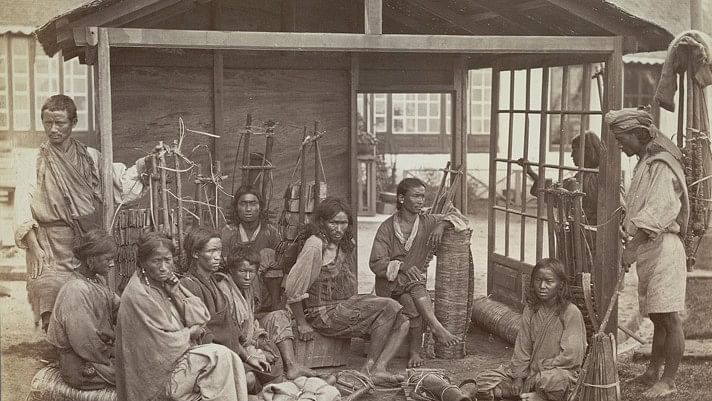
A group of Lepchas from the 1870s.
Credit: Wikimedia Commons
Scientists at the Department of Science and Technology in Sikkim have rediscovered a cane species called Calamus inermis, which was used by the Lepchas to construct bamboo houses. This species was found in the Dzongu valley along the river Teesta, Mangan District, Sikkim, approximately 65 km away from Gangtok town.
Currently, there are only seven populations of this cane species remaining. Additionally, three populations were discovered at Taryang.
The study was conducted by Sonam R Lepcha and Sonam T Lepcha from the Department of Science and Technology. The species was reported over 100 years ago, but its population has significantly declined over time, Sonam R Lepcha, Joint Director cum Senior Scientific Officer at DST said in an interview with EastMojo.
According to Sonam, the mature stems of this species are used in the construction of traditional bamboo houses, Lepcha traditional hats, furniture, and cane bridges. The species provides high-quality cane for furniture-making and binding, and its fruits are used in diabetes treatment.
Sonam mentioned that in the past, this species must have been important for building houses, bridges, and household utensils. He also suggested that the Lepcha traditional hat, Sumok thyaktuk, may have been made from this species due to its durability and appearance.
The Sumok thyaktuk is a unique craft exclusive to the Lepcha tribe in the Dzongu Tribal Reserve Area of Sikkim. Sonam added that the hat was worn by royal soldiers during the Chogyal dynasty in Sikkim and is mandatory in marriage ceremonies, worship, and other festivals of the tribe.
According to a research paper published in the Pleione journal, there is a location called Ravong situated under Hee Gyathang GPU where the population of Calamus inermis, a type of rattan, was once abundant. However, during the 1950s to 1970s, these large populations of both species were destroyed and uprooted to make way for the expansion of large cardamom farming. Additionally, there is a belief among the Lepchas that planting rattan during that time was considered taboo.
The research reveals that deforestation and ongoing land use changes pose a threat to the large-scale species in the Himalayas, particularly the rare, threatened, and endangered Calamus inermis rattan species of Sikkim. Therefore, it emphasizes the need for special attention in conserving this species.
The study recommends prioritizing both in-situ and ex-situ conservation initiatives for Sikkim's cane/rattan, including mass propagation through tissue culture and seed propagation. It suggests that the Department of Forests, Agriculture, Science, and Technology to play a significant role in the conservation efforts for this species.